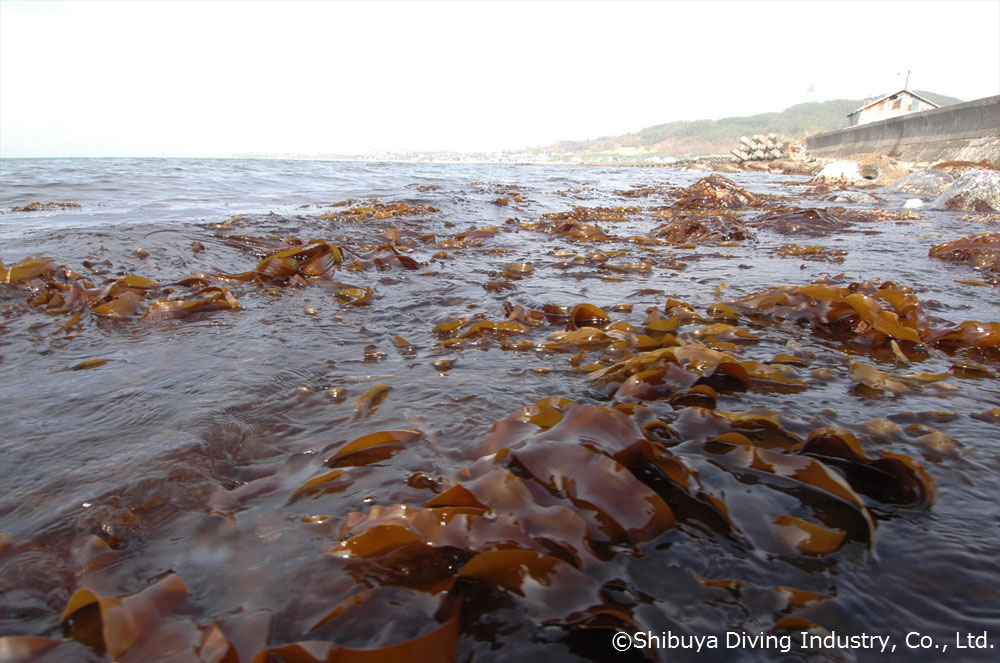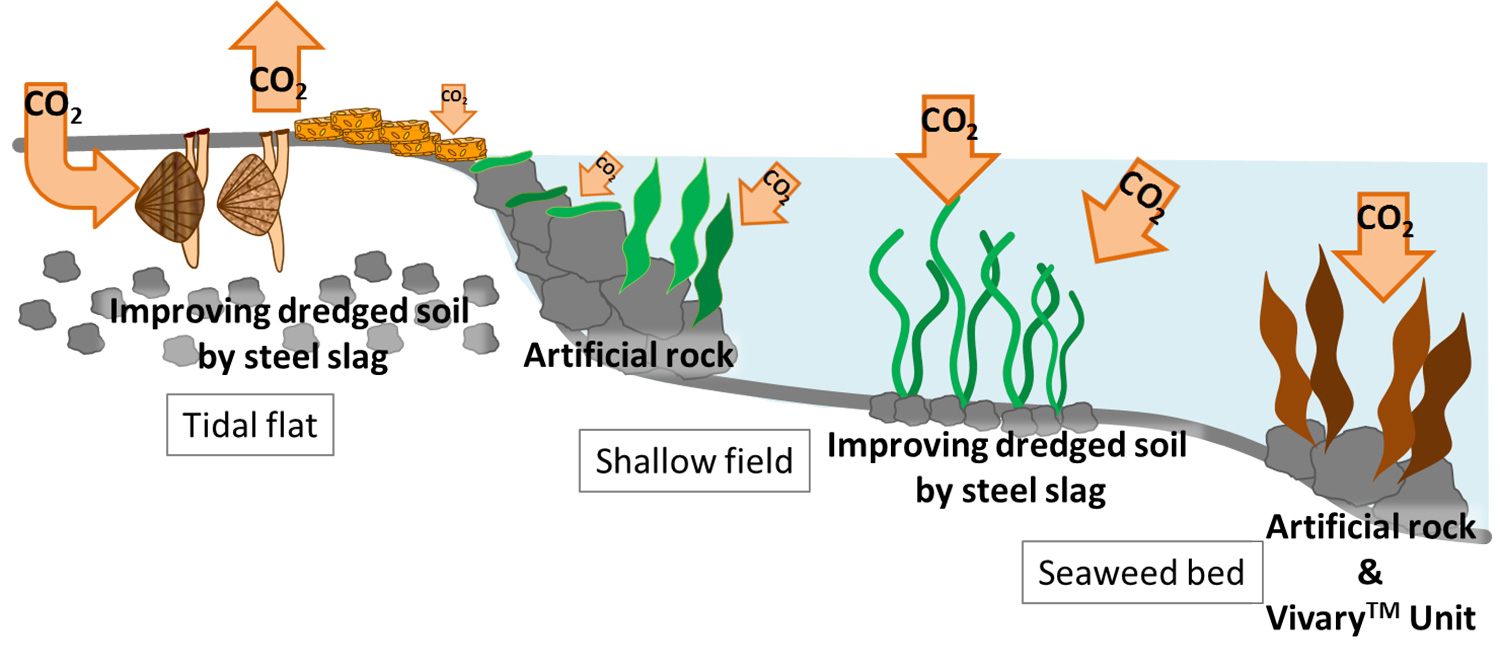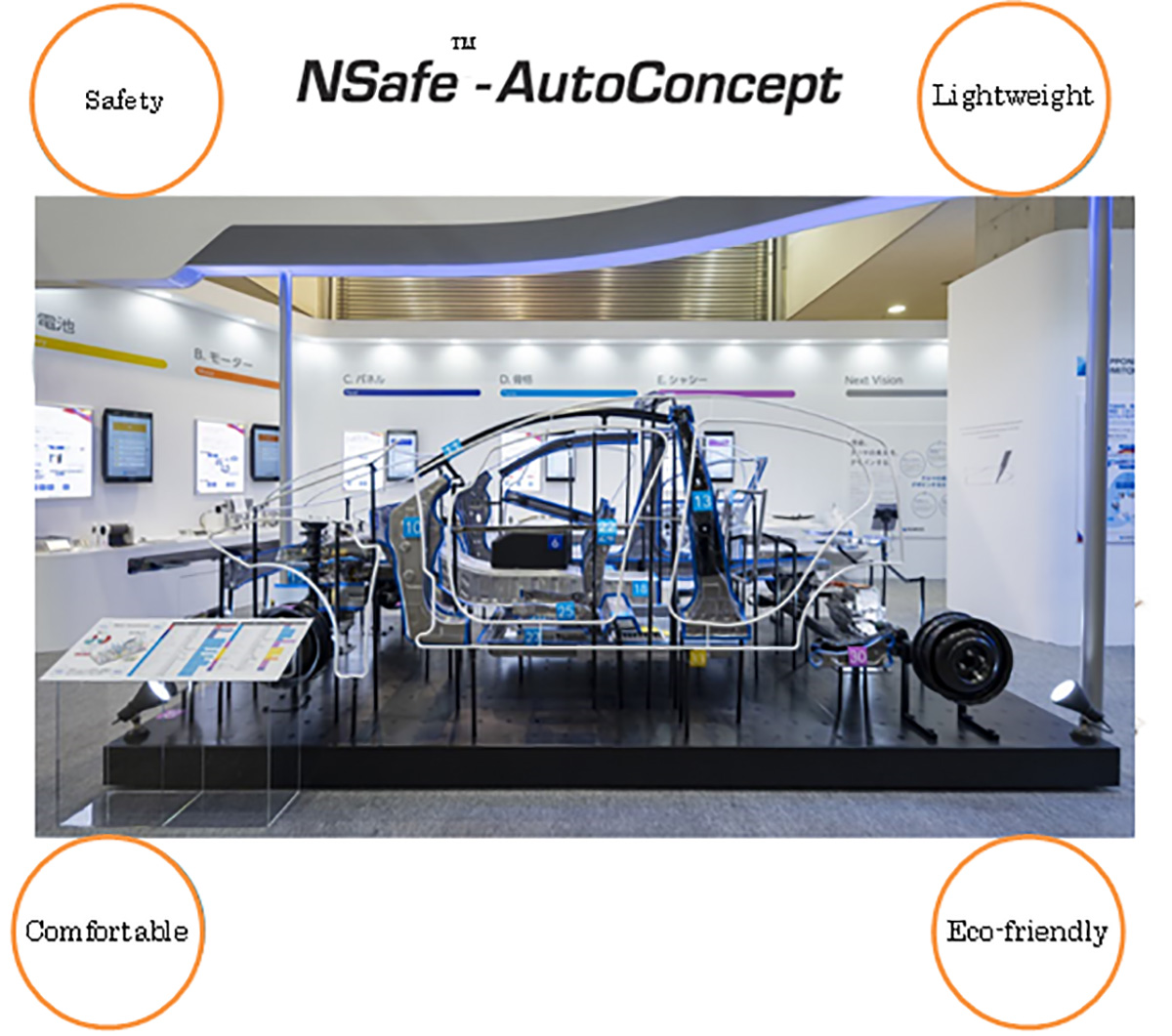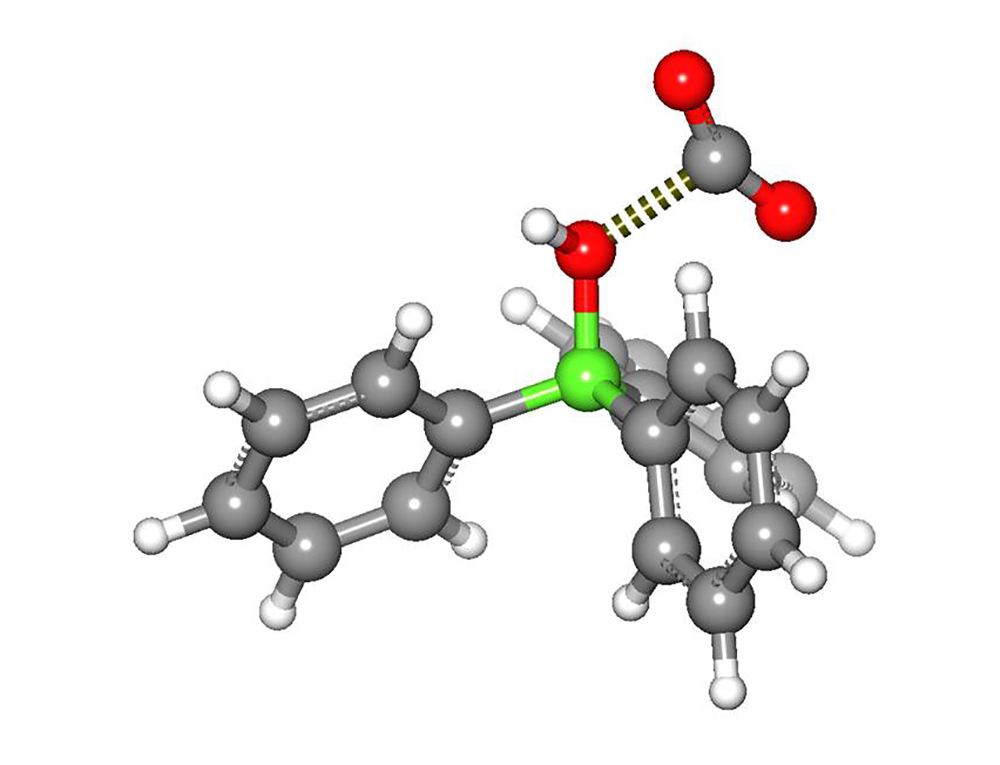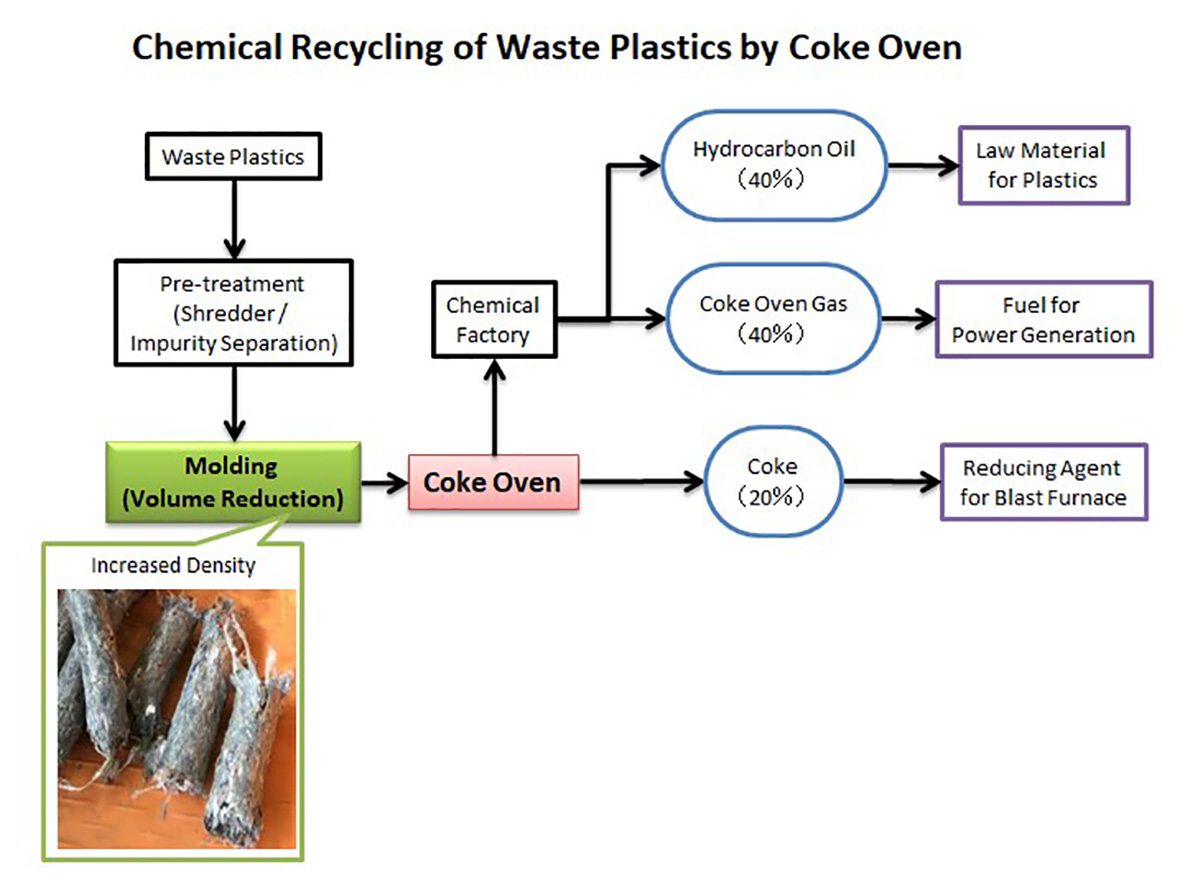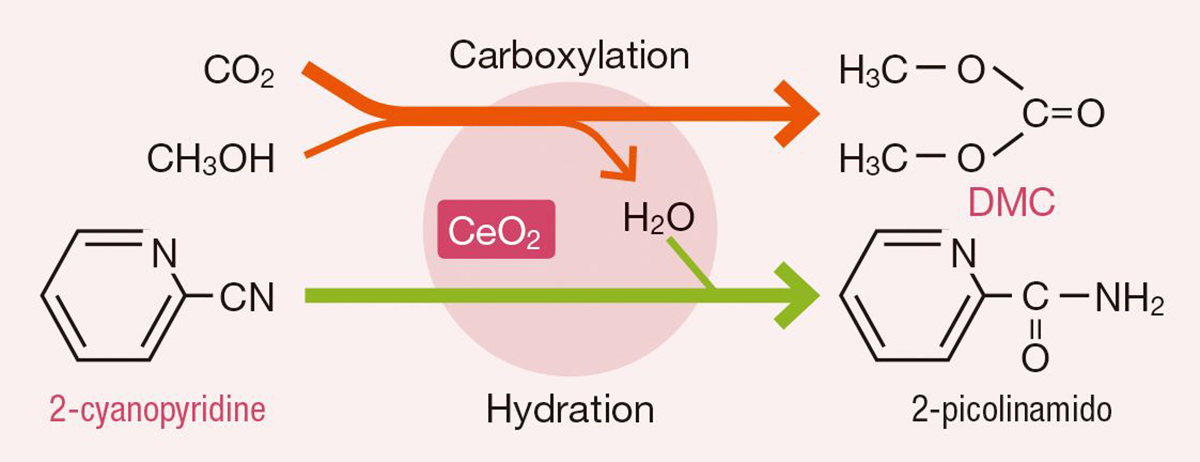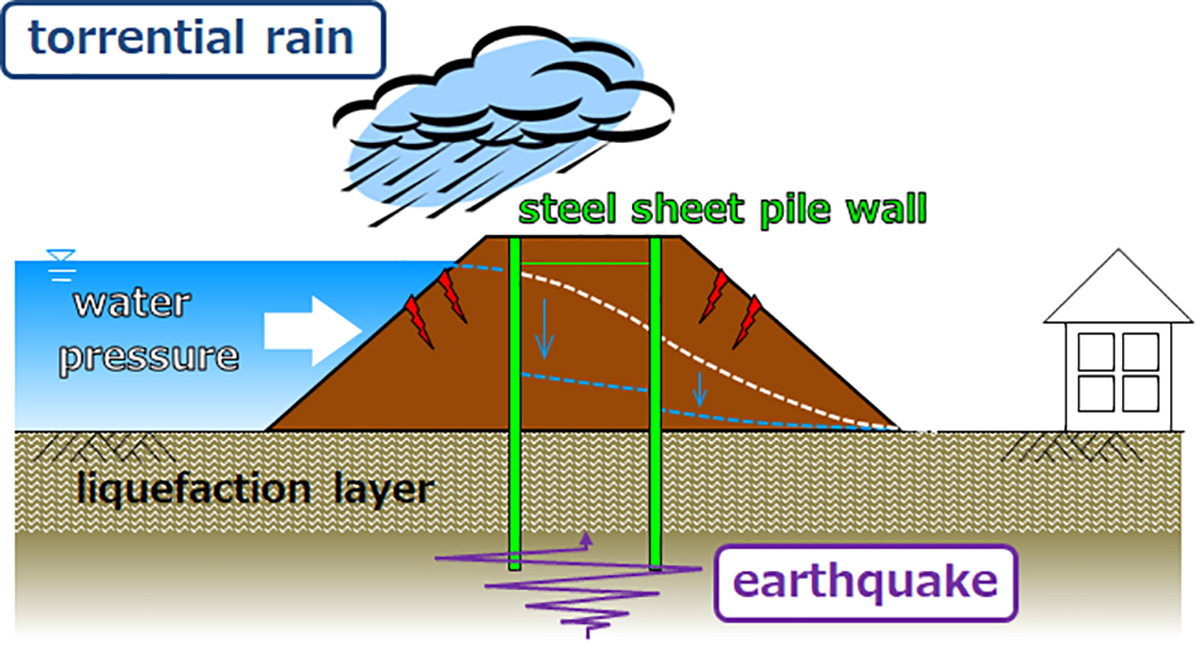CO2 uptake and carbon storage as blue carbon by utilizing steel slag
NIPPON STEEL CORPORATION
Outline
We have been scientifically considered the utilization and safety of steel slag for the restoration of seaweed beds. By developing this technology, we have begun full-scale basic research on blue carbon (CO2 uptake and carbon storage by coastal ecosystem), which is attracting attention as a measure against global warming. We are trying to estimate the effects, ex. the amount of carbon stock, to restore tidal flats, shallow fields, and seaweed beds, etc. using steel slag. In the mesocosm experiment facility (photo 1) and the actual coastal area (photo 2), we have started with the accumulation of the basic data.
Description
a) Goal in our challenge
We have developed coastal environment improvement technologies that utilize steel slag, a by-product of the steelmaking process. They are artificial rock, the improving dredged soil by steel slag and fertilizer named VivaryTM Unit. Focusing on the function of the coastal environment as a blue carbon ecosystem, we will evaluate the carbon stock capacity of the coastal ecosystems applying our technologies and contribute to CO2 reduction by establishing the coastal environment improvement technologies (Figure. 1).
b) Issues to our goal
・To estimate the carbon stock capacity, we have to study many issues which are the amount of biomass, ecosystem’s absorption/emission rate of atmospheric CO2 as its carbon stock change rate, and carbon dynamics in complex blue carbon ecosystems, etc., because they vary greatly by species and region. And the accumulation a lot of the data is also necessary.
・Sustainable action by nations, private organizations and private enterprises is very important to take root blue carbon as the CO2 reduction measure. To support their actions needs the system which gives some carbon credits to their results and some incentives to the materials to create blue carbon ecosystem.
c) Our advantage and action
・ Establishing the estimate methods using our own mesocosm experiment facility
・ The accumulation of the carbon stock data at different blue carbon ecosystems, which are kelp beds, sargassum beds, and seagrass beds, etc..
・ To launch the big demonstrative project to implement blue carbon into our society.
・ PR activities about our contribution using steel slag to blue carbon.
d) Effects of our challenge
Kuwae et al. (2019) estimated the nationwide carbon sink potential to be 157 million tonnes CO2/year, with an upper limit of 518 million tonnes CO2/year, in case of the restoration blue carbon ecosystems using dredged soil and steel slag by 2030. We will contribute the restoration blue carbon ecosystem applying the coastal environment improvement technologies that utilize steel slag.
*Kuwae et al. (2019) Nationwide estimate of the annual uptake of atmospheric carbon dioxide by shallow coastal ecosystem in Japan. J. JSCE, Ser.B2, Coastal engineering, vol. 75, 10-20.
Partner(s)
National universities, national research centers, Blue carbon workshop/conference organized by Ministry of Land, Infrastructure, Transport and Tourism.
Supplementary information
Introduction of our blue carbon research
https://www.nipponsteel.com/csr/env/warming/future.html
Introduction of VivaryTM Unit
https://www.nipponsteel.com/product/slag/
Other Innovation Challenges
Contributing the hydrogen infrastructure formation by spreading usage of the specialized steel for hydrogen station
NIPPON STEEL CORPORATION
Development and dissemination of Eco ProductsTM that contribute to reductions in CO2 emissions at the point of product use
NIPPON STEEL CORPORATION
Development of CO2 emission reduction technology using hydrogen in blast furnace steelmaking
NIPPON STEEL CORPORATION
Development of Hydrogen Steelmaking Process for Zero Emission
NIPPON STEEL CORPORATION
Establishment of dimethyl carbonate (DMC) production method using CO2 as raw material
NIPPON STEEL CORPORATION
Provision of solutions for “National Resilience” aimed at adaptation to climate change
NIPPON STEEL CORPORATION
Zero emission hydrogen production technology by artificial photosynthesis
NIPPON STEEL CORPORATION
Similar Innovation Challenges
Accelarating the penetration of renewable energy resources with “Open Energy System”
Sony Group Corporation
Achieving net-zero carbon emissions from plant factories using full artificial lighting
Taikisha Ltd.
Advanced technology for buildings providing energy-saving and comfortable indoor environment (under Net Zero Energy condition)
Mitsubishi Electric Corporation
AI control reduces base station power consumption by up to 50%
KDDI CORPORATION




